Imagine producing a tantalizing, perfectly smoked turkey that has your friends and family raving for days. The key to achieving this unforgettable taste sensation is selecting the best wood for smoking turkey, a crucial element that amateur and seasoned chefs overlook. Choosing the right wood can elevate your culinary prowess, transforming your smoked turkey from a simple dish to a mouth-watering feast that leaves everyone wanting more.
In this article, we will help you unravel the mystery behind selecting the best wood for smoking turkey, including an exploration of various wood types and their unique flavors, the advantages and disadvantages of each, and expert tips to achieve that sublime smoky flavor that will make your turkey an unforgettable masterpiece. So, fire up your smoker, grab your favorite wood chips, and get ready to become the ultimate turkey-smoking connoisseur.
How Does The Type Of Wood Used Impact The Flavor Of Turkey?
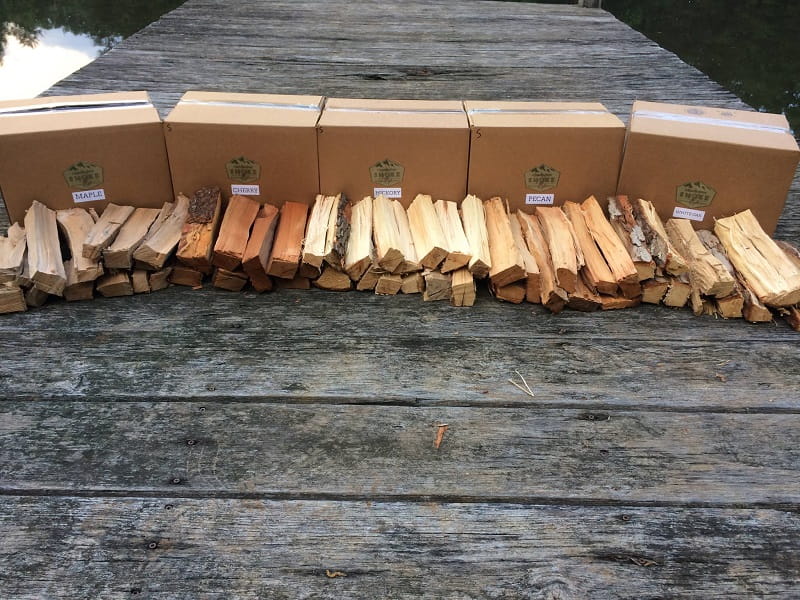
As a self-proclaimed turkey enthusiast, I always seek ways to elevate my turkey game. I have never fully explored the impact of the type of wood used on the bird’s flavor. So, I set out to research and experiment to see just how much of a difference the type of wood makes.
First things first, let’s talk about the basics. When smoking or grilling a turkey, the wood used plays a crucial role in imparting flavor to the meat. Different types of wood have different flavors and aromas, and some are better suited for certain types of meat than others. Some of the most popular woods used for smoking or grilling turkey include hickory, oak, cherry, apple, and mesquite.
I found that the type of wood used does make a noticeable difference in the flavor of the turkey. Each wood imparted a unique taste and aroma to the meat; some were better suited for certain types of turkey than others.
In the end, it all comes down to personal preference. Some people may prefer the bold, smoky taste of hickory, while others may prefer the fruity notes of cherry or apple wood. Whatever your preference, experimenting with different types of wood is a fun and delicious way to elevate your turkey game.
Best Wood For Smoking Turkey?
If you’re someone who loves smoked turkey, then you know that the right wood can make all the difference in the flavor of the meat. When choosing the right wood for smoking turkey, there are a few things to keep in mind.
For one, you want to choose a wood that has a mild flavor so that it doesn’t overpower the flavor of the turkey. Cherry, Alder, and Maple are all great options, with Cherry being a favorite among many. Another great option is applewood, which has a fruity flavor that pairs perfectly with the turkey.
But be careful to avoid woods that are too strong, like mesquite or hickory and oak, as these can overwhelm the flavor of the turkey. Choosing the right wood ensures that your smoked turkey is flavorful, delicious, and perfectly cooked every time.
Cherry
Cherrywood is my personal favorite when it comes to smoking turkey. It provides a sweet and fruity flavor that pairs perfectly with the mild taste of turkey. Cherry wood also adds a subtle reddish hue to the turkey’s skin, making it look as good as it tastes. Just be sure to use a light hand when smoking with cherry wood, as it can easily overpower the turkey if used in excess.
Pecan
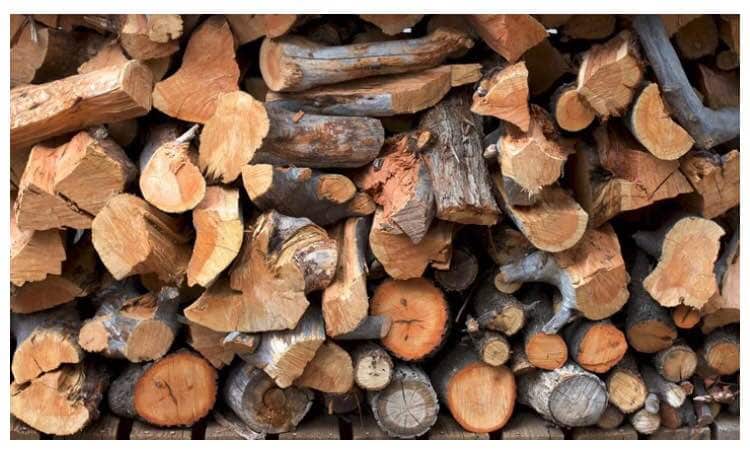
Pecan wood is another excellent option for smoking turkey. It has a slightly nutty flavor that complements the natural taste of turkey. Pecan wood also produces a beautiful mahogany color on the turkey’s skin, giving it an impressive appearance. Keep an eye on the temperature when using pecan wood, as it can cause the turkey to cook faster than other woods.
Maple
Maple wood is a versatile smoking wood for various meats, including turkey. It has a mild, sweet flavor won’t overpower the turkey’s natural taste. Maple wood also adds a beautiful golden color to the skin of the turkey, making it an impressive centerpiece for any holiday meal.
Apple
Applewood is a popular choice for smoking a turkey, and for a good reason. It has a sweet and fruity flavor that pairs perfectly with the mild taste of turkey. Applewood also produces a beautiful golden color on the skin of the turkey, giving it a picture-perfect appearance. Just be sure to use a light hand when smoking with apple wood, as it can easily overpower the turkey if used in excess.
Alder Wood
Alder wood is a lesser-known smoking wood, but it shouldn’t be overlooked when it comes to smoking turkey. It has a delicate and sweet flavor that won’t overpower the turkey’s natural taste. Alder wood also produces a light and golden color on the turkey’s skin, making it an impressive addition to any holiday meal.
Peach (Fruitwood)
When it comes to smoking turkey, fruitwoods are a popular choice, and peachwood is one of the best. It imparts a sweet, mild flavor that complements the natural taste of the bird. Peachwood also burns evenly, producing a pleasant aroma filling your backyard. Peach wood is an excellent choice if you’re looking for a wood that adds a subtle, fruity flavor to your turkey.
Woods to Avoid When Smoking Turkey
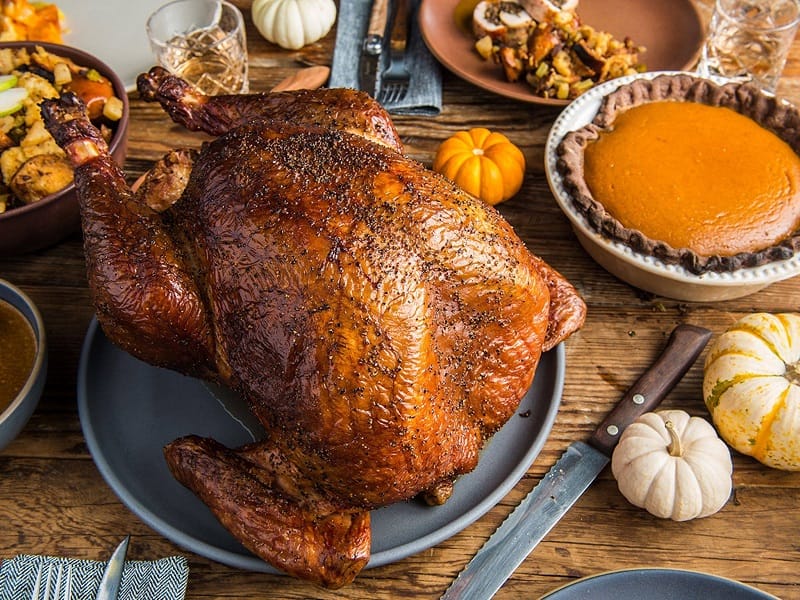
While plenty of wood can add a delicious smoky flavor to your turkey, there are a few that you should avoid at all costs. Here are three of the woods I always avoid when smoking turkey:
Mesquite
This may be a controversial choice, as mesquite is a popular wood for smoking all kinds of meat. However, mesquite can be overpowering when it comes to turkey. It has a very strong, almost bitter flavor that can easily overwhelm the delicate flavor of the bird. Unless you’re going for an extremely bold and intense flavor, I recommend avoiding mesquite when smoking your turkey.
Hickory
Hickory is another popular wood for smoking, and it can be great for meats like pork and beef. However, I find that it can be too strong for Turkey. Hickory has a distinct, almost bacon-like flavor that can be overwhelming when paired with the mild turkey flavor. If you decide to use hickory, I recommend using it sparingly or mixing it with a milder wood like apple or cherry.
Oak
Oak is a popular wood for smoking all kinds of meats, but it can be a bit too neutral for turkey. While oak can add a nice smoky flavor to the bird, it doesn’t have a very distinct flavor of its own. If you’re looking for a more complex and interesting flavor profile, I recommend using wood like an apple, cherry, or pecan instead.
Read more:
- Best Wood For Smoking Ribs
- Best Wood For Smoking Chicken
- Cook Ground Turkey To What Temp
- How Long Does Ground Turkey Last In The Fridge
- How To Defrost Ground Turkey
Can You Mix Different Types Of Wood When Smoking Turkey?
One question that often comes up is whether you can mix different types of wood when smoking turkey. The answer is yes, but there are a few things to keep in mind.
First, it’s important to understand that different types of wood have different flavors. Some are stronger than others, and some have a sweeter or fruitier taste. So when you’re mixing wood, you need to be careful not to overpower the natural flavor of the turkey.
Another thing to consider is the type of smoker you’re using. Some smokers are better suited for mixing wood than others. For example, if you’re using a pellet smoker, mixing different types of wood pellets to get the flavor you want is easy. But controlling the flavor may be more difficult if you’re using a traditional charcoal smoker.
That being said, here are a few tips for mixing different types of wood when smoking turkey:
- Start with mild wood. If you’re new to smoking turkey or mixing different types of wood, start with a mild wood like apple or cherry. These woods are sweet and fruity and won’t overpower the turkey.
- Mix in stronger woods gradually. Once you’ve got a good base flavor with your mild wood, you can start mixing in stronger woods like hickory or mesquite. Just be careful not to add too much at once.
- Don’t be afraid to experiment. Smoking a turkey is about experimenting and finding what works best for you. So don’t be afraid to try different combinations of wood until you find the perfect flavor.
In conclusion, mixing different types of wood when smoking turkey is possible, but it requires careful planning and experimentation.
How Does The Moisture Content Of The Wood Affect The Smoking Process?
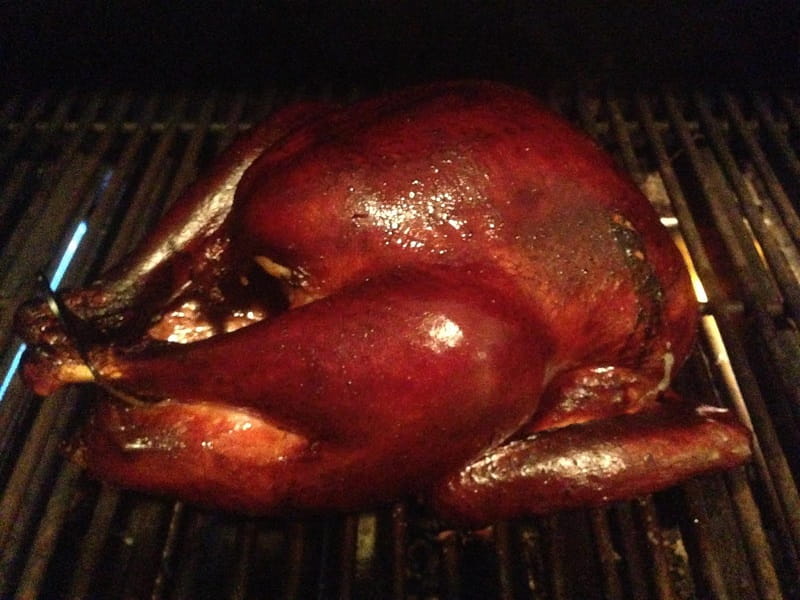
One of the most important factors to consider when smoking meat is the moisture content of the wood used. Believe it or not, the moisture content of the wood used in smoking meat can greatly affect the end result of the meat’s flavor, juiciness, and tenderness.
First and foremost, it’s essential to understand what moisture content means. Simply put, the moisture content is the amount of water in the wood. Freshly cut wood has a high moisture content that can range anywhere from 50-75%. As the wood dries, the moisture content decreases, and the wood becomes more suitable for smoking.
When it comes to smoking meat, wood with a lower moisture content is preferred. This is because wood with a higher moisture content produces more steam and less smoke. The wood’s steam can prevent the smoke from penetrating the meat, resulting in a less flavorful end product.
On the other hand, wood with a lower moisture content produces more smoke and less steam. This allows the smoke to fully penetrate the meat, resulting in a more flavorful and tender end product.
Another factor to consider is the type of wood being used. Different types of wood have different moisture content levels and can produce varying levels of smoke. For example, hickory and oak are known for producing a stronger, more intense smoke flavor, while fruitwoods like apple and cherry produce a milder, sweeter smoke flavor.
It’s important to note that the moisture content of the wood can also be affected by external factors such as humidity and temperature. In humid environments, wood can absorb moisture from the air, increasing its moisture content. Similarly, wood can dry out in high-temperature environments more quickly, resulting in lower moisture content.
What Is A Mild Wood For Smoking Turkey, And Why Do Some Prefer It?
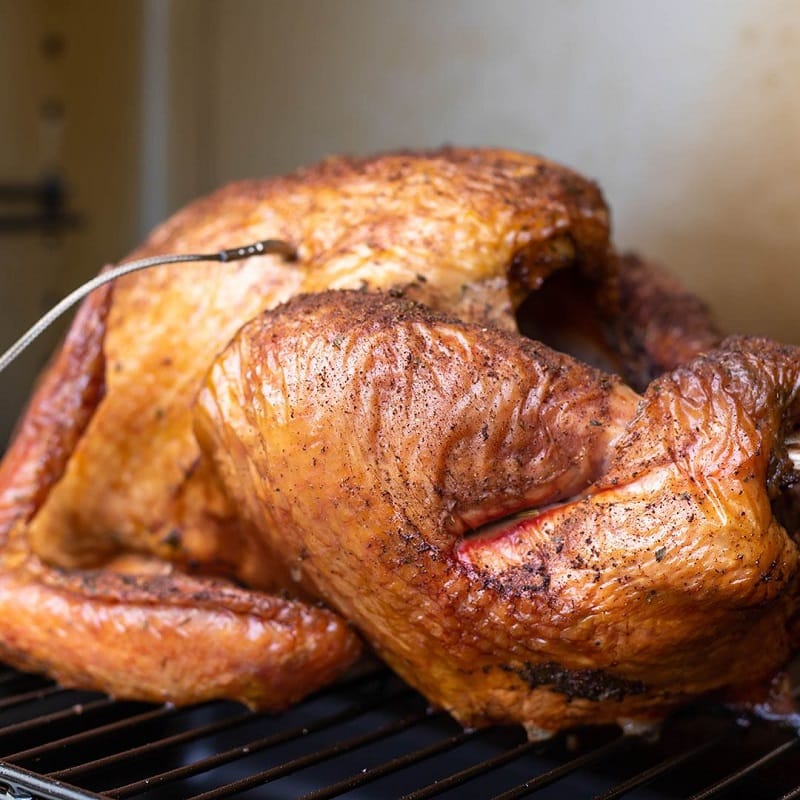
First things first, what exactly is mild wood? Mild wood is a term used to describe types of wood that have a subtle flavor and aroma when used for smoking. Some examples of mild wood include fruitwoods like apple, cherry, peach, pecan, and alder. These types of wood are perfect for those who want to add a touch of smoke flavor to their turkey without overpowering the natural taste of the meat.
Now, onto the question of why some prefer mild wood for smoking turkey. The simple answer is that it allows the natural flavor of the turkey to shine through. When using stronger woods like hickory or mesquite, the smoke flavor can easily become too dominant and overpower the turkey, leaving it tasting like nothing but smoke. On the other hand, using mild wood enhances the turkey’s natural flavor while adding a pleasant hint of smoke.
But how do you use mild wood when smoking turkey? The key is to use it sparingly and balance it with other flavors. For example, you can combine mild wood and herbs like rosemary and thyme to create a well-rounded flavor profile. It’s also important to note that mild wood burns quickly, so you must keep an eye on your smoker and add more wood as needed.
In conclusion, mild wood is a great option for those who want to enhance the natural flavor of their turkey without overpowering it with smoke. Some popular types of mild wood include fruitwood, pecan, and alder. When using mild wood, it’s essential to use it sparingly and balance it with other flavors to create a well-rounded taste.
Are There Any Health Concerns To Consider When Selecting A Type Of Wood For Smoking in Turkey?
One of the main concerns when selecting wood for smoking is the potential for releasing toxic chemicals during the smoking process. Some types of wood, such as cedar and pine, contain high levels of resin that can release harmful chemicals when burned. When ingested, these chemicals can be harmful and even cause respiratory problems when inhaled.
Another important factor to consider when selecting wood for smoking is the potential for allergic reactions. Some people may be allergic to certain types of wood and can experience symptoms such as skin irritation, hives, and even difficulty breathing.
It is also essential to consider the source of the wood. Wood treated with pesticides or other chemicals can also release harmful toxins when burned. It is recommended to use wood that is specifically labeled as being safe for food use.
How Do You Know When The Desired Level Of Smokiness Has Been Achieved When Smoking Turkey?
When it comes to smoking a turkey, achieving the desired level of smokiness can be challenging. After hours of smoking, it can be difficult to determine whether the turkey has been smoked to perfection. Today, I will share my tips on how to know when the desired level of smokiness has been achieved when smoking turkey.
Firstly, it is important to note that the desired level of smokiness is subjective and varies depending on personal preference. Some people prefer a strong smoky flavor, while others prefer a milder taste. Determining your desired level of smokiness before smoking the turkey is important.
The first indicator of smokiness is the color of the turkey. An adequately smoked turkey should have a golden-brown color. The skin should be slightly crispy, and the meat should be juicy and tender. If the skin is too dark, it may indicate that the turkey has been smoked for too long, resulting in a bitter taste.
Another way to determine the level of smokiness is to check the turkey’s internal temperature. The ideal temperature for a smoked turkey is 165°F. It is essential to use a meat thermometer to check the temperature, as it can be difficult to determine the level of smokiness by appearance alone.
The aroma of the turkey can also indicate the level of smokiness. An adequately smoked turkey should have a rich, smoky aroma. If the aroma is too strong, it may indicate that the turkey has been smoked for too long, resulting in an overpowering taste.
Lastly, the taste of the turkey is the ultimate indicator of the level of smokiness. The turkey should have a balanced smoky flavor that complements the natural taste of the meat. If the smoky flavor is too strong, it can overpower the taste of the turkey.
How to Smoke a Turkey?

Ingredients:
- 1 (10 pounds) whole turkey, neck, and giblets removed
- 4 cloves garlic, crushed
- 2 tablespoons seasoned salt
- ½ cup butter
- 2 (12 fluid ounces) cans of cola-flavored carbonated beverage
- 1 medium apple, quartered
- 1 medium onion, quartered
- 1 tablespoon garlic powder
- 1 tablespoon salt
- 1 tablespoon ground black pepper
- 2 cups hickory wood chips, or more as needed (Optional)
Directions:
- First, preheat your smoker to 225 to 250 degrees F (110 to 120 degrees C). This is the optimal temperature range for smoking a turkey. While your smoker is heating up, rinse your turkey under cold water and pat it dry with paper towels.
- Next, it’s time to season your turkey. Rub crushed garlic over the outside of the turkey, and sprinkle it with seasoned salt. This will flavor the turkey and help it develop a nice crust during smoking. Then, transfer the turkey to a disposable roasting pan.
- Now it’s time to prepare the cavity of the turkey. Fill it with a mixture of butter, cola, apple, onion, garlic powder, salt, and pepper. This will add some moisture and flavor to the turkey as it smokes. Cover the turkey loosely with foil to keep the smoke in.
- Before you place the turkey in the smoker, add your wood chips according to the manufacturer’s directions. Then, place the roasting pan in the preheated smoker. You’ll want to smoke the turkey for about 5 hours, basting it every 1 to 2 hours with juices from the bottom of the roasting pan.
- As you continue smoking the turkey, you may need to add more wood chips to keep the smoke going. You’ll want to smoke the turkey until it is no longer pink at the bone and the juices run clear, which should take about 5 more hours. To be sure your turkey is fully cooked, insert an instant-read thermometer into the thickest part of the thigh, near the bone, and make sure it reads 180 degrees F (80 degrees C).
- Once your turkey is fully cooked, please remove it from the smoker and let it rest for about 15 minutes before carving it. This will allow the juices to redistribute throughout the meat, resulting in a more flavorful and tender turkey.
Smoking a turkey takes time and patience, but the result is worth it. The turkey comes out juicy and flavorful; your guests will be impressed with your cooking skills.
Common Mistakes People Make When Selecting Wood For Smoking Turkey?
Here, I’m going to share some common mistakes people make when selecting wood for smoking turkey and how you can avoid them.
Mistake #1: Using the wrong type of wood
Not all wood is created equal when it comes to smoking turkey. Some woods are too strong and can overpower the flavor of the turkey, while others are too mild and won’t provide enough flavor. It’s important to choose a wood that will complement the flavor of the turkey rather than compete with it.
My favorite woods for smoking turkey include hickory, apple, and cherry. Hickory provides a strong, smoky flavor that pairs well with the rich flavor of turkey. Apple and cherry are milder woods that provide a sweet, fruity flavor that complements the natural flavor of the turkey.
Mistake #2: Using green or unseasoned wood
Green or unseasoned wood contains too much moisture, resulting in a bitter, acrid flavor when burned. It’s important to use seasoned wood allowed to dry out for at least six months before using it for smoking.
If you’re using wood that you’ve cut yourself, let it dry out for at least six months before using it for smoking. If you’re purchasing wood, look for properly seasoned wood.
Mistake #3: Using too much wood
Using too much wood can result in a bitter, acrid flavor, just like using green or unseasoned wood. It’s important to use the right amount of wood to ensure that the turkey is infused with flavor.
Generally, you should use about one to two cups of wood chips for every hour of smoking. If you’re using chunks of wood, you should use about one to two chunks for every hour of smoking.
Mistake #4: Not soaking the wood
Soaking the wood before using it for smoking can help prevent it from burning too quickly and producing a bitter, acrid flavor. Soaking the wood also helps create more smoke, which results in a richer, more flavorful turkey.
To soak the wood, place it in a bowl of water for at least 30 minutes before using it for smoking. Drain the excess water before adding the wood to the smoker.
In conclusion, selecting the right wood for smoking turkey is crucial to achieving the perfect flavor. Avoiding these common mistakes can help ensure your turkey is infused with the right flavor without any bitter or acrid notes.
FAQs About Best Wood For Smoking Turkey
Can Any Wood Smoke A Turkey?
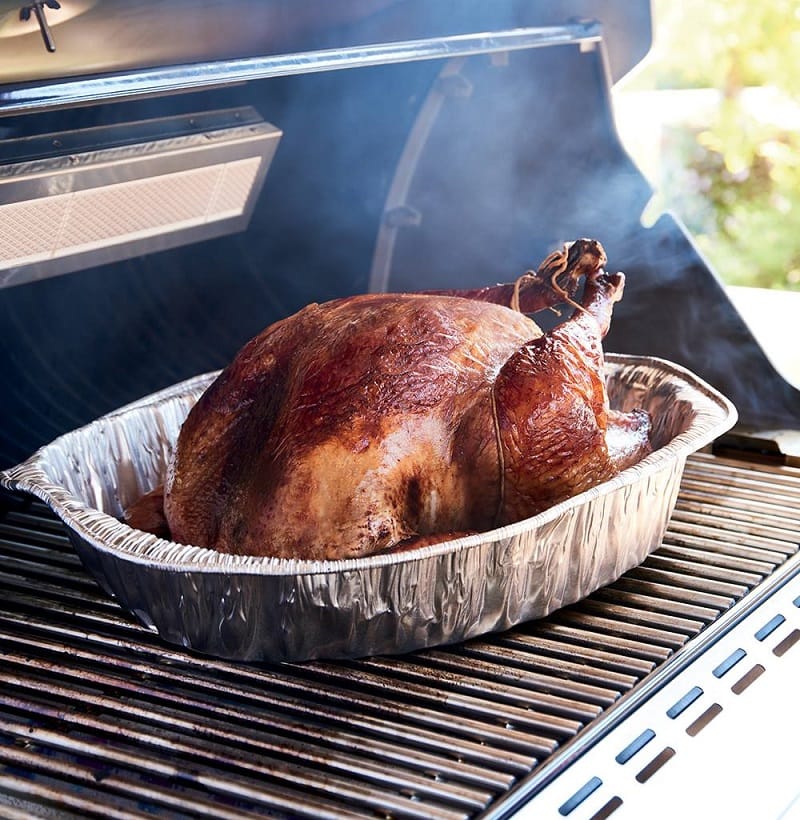
Not all woods are created equal when smoking this holiday favorite. While some woods, like mesquite or hickory, can be overpowering, others, like pecan or cherry, provide the perfect balance of smokiness and sweetness. Maplewood is another great option for a light touch of flavor.
So, can any wood smoke a turkey? Technically, yes. However, to achieve the best results, it’s recommended to use wood that complements the flavor of the turkey without overpowering it. So, the next time you’re smoking a turkey, consider using one of these wood options to elevate your bird’s taste.
How Do Wood Chips For Smoking Meat Compare To Larger Wood Chunks For Smoking Turkey?
When it comes to smoking meat, there are different options, including wood chips and larger wood chunks. Wood chips are bi-products of the cutting process, while larger wood chunks are effectively cut to size from logs.
While electric smokers and charcoal smokers tend to use wood chips, offset smokers utilize larger wood chunks or logs. Wood chips burn up more quickly than wood chunks, making them ideal for short cooks like fish, poultry, and smaller cuts of meat. On the other hand, wood chunks burn slowly and release smoke over a long period, making them ideal for smoking larger cuts of meat like turkey.
Ultimately, the choice between wood chips and wood chunks depends on personal preference and the type of smoker being used.
How Does Apple Wood Compare To Pecan And Cherry Wood For Smoking Turkey?
When it comes to smoking turkey, apple wood is a classic choice. It offers a sweet and fruity flavor but is more subtle than cherry or pecan wood. However, it should be used sparingly as it is very mild.
Cherry wood is also a great option, adding a sweet flavor and a dark mahogany color to the meat. If using cherry wood, it is important to mix it with milder wood such as apple or pecan.
Pecan wood offers a deep and savory flavor, which complements the lean nature of turkey well.
Overall, apple and cherry wood are the most commonly used fruit woods for smoking turkey and work particularly well with delicate foods. Hickory wood can also be used sparingly but is most widely used for other types of meat.
Conclusion
In conclusion, if you’re looking for the best wood for smoking turkey, look no further than cherry, alder, maple, and applewood. A mild flavor makes them the perfect choice for enhancing the natural taste of turkey. Ultimately, the best wood for smoking turkey will depend on your personal preference and what is available in your area.
References:

Hey readers! Chip Holland here, and I’m a Manager of this website. My passion for writing about it only matches my passion for BBQ. Follow my blog for mouth-watering recipes, tips, and tricks for the perfect smoke, grill, and BBQ. I’m sure you won’t be disappointed!
